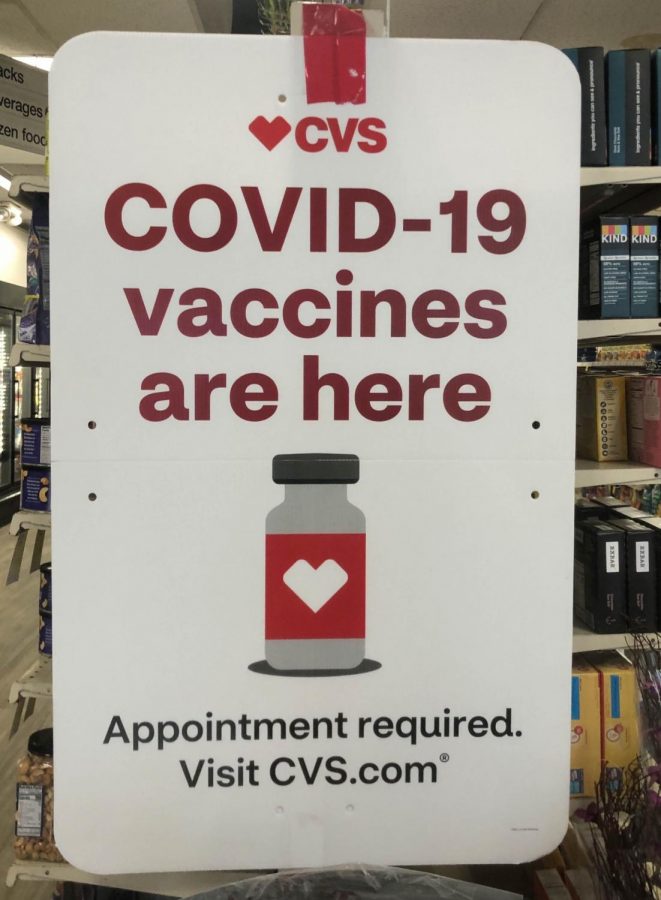Vaccine Skepticism: a Barrier on the Path to Normal
June 2, 2021
Finally, after over a year of lockdown, it feels as though both Cambridge and the US are beginning to take notable strides in public vaccinations. Just a few weeks ago, the Pfizer vaccine was approved for Cambridge residents ages 16 and up, which included many CRLS students, just in time for expanded in-person learning on May 10th. In the first few months of Joe Biden’s presidency, the US reached record daily vaccine-administration rates, and now major cities like San Francisco are giving the public strong reasons for optimism, with almost 60% of their adult population at least partially vaccinated and maintaining new cases at under 30 per day. After months of turmoil, US COVID-19 trends finally seem to be moving in the right direction. But, even as the country seems to approach the distant possibility of herd immunity, a significant obstacle remains.
As vaccines have become more widely available, surveys have shown that a steady quarter of the population doesn’t plan on getting the vaccine. Anti-vaxxers are not a new phenomenon, but what used to be a comedic motif armed with essential oils could now pose a serious threat to the post-COVID-19 future Americans have been seeking for over a year now.
They may be loud, but anti-vaxxers in their purest form—those who cite microchips and other conspiracies as justification for their mistrust—don’t make up a huge part of this percentage. In fact, many deterred from the vaccine have motivations that go all the way back to the first few months of virus.
When COVID-19 first began to spread in the beginning of 2020, it seemed like a distant threat. Former President Donald Trump’s assurance that the US was both well prepared and safe, as well as a general lack of knowledge about the virus itself, meant that for several months people argued it was no more than a glorified flu that would pass with time or, on the more extreme side of this spectrum, just a hoax. Even as the virus continued to spread and conditions worsened, this belief remained strong.
One of the main propagators of this theory was Trump, and evidence of the long-term impact he’s had on his party is clear in the populations that refuse to get the vaccine, which include half of Republicans under the age of 50. Now that Trump has left office, others have stepped in to cater to this demographic like Joe Rogan, a popular podcast host. In a show in April, he declared, “If you’re 21 years old, and you say to me, ‘Should I get vaccinated?’ I’ll go, ‘No.’” The obvious partisan divide on vaccinations was at least partially expected due to Trump’s actions in office, and factors like Bill Gates’ financial involvement in the development of the vaccine.
The Swine Flu outbreak in 2009 showed similar patterns, and proved race had a potential effect. Ms. Pei-Yun Chu, a biology teacher at CRLS, distinguishes this as a separate issue. When asked about where she believes this sort of skepticism comes from, she told the Register Forum, “A lot of people just don’t know how vaccines work, what side effects actually mean, and they can get caught up in fear of the unknown. On the other hand, it’s certainly understandable for people who come from marginalized groups (such as people of color) to be wary of the medical industry because they have historically been mistreated in those fields.”
With political affiliation explaining a significant portion of anti-vaxxers, what’s left are essentially outliers. Some believe that they just don’t need it, with the “emergency vaccine” label suggesting a vaccine is only necessary on your deathbed or on the brink of apocalypse. Others aren’t convinced that the vaccine research has been flushed out enough to take it. Ms. Chu argues that while the development for the COVID-19 vaccine has been fast, that’s not an indicator of its effectiveness or safety. She argued that “Actually developing and producing an effective vaccine does not need to take very long at all, and I believe the scale of the vaccine trials can help mitigate some of the concerns over safety testing.” Because of an apparent lack of accountability for any complications that may occur, people are hesitant, and the complications with the Johnson & Johnson vaccine a few weeks ago, in which some people developed blood clots after receiving the shot, only legitimized their fears.
The bottom line from health officials and contagious disease experts seems to be that the more people that are vaccinated in the least time possible is our best shot at herd immunity, and therefore a return to some semblance of normalcy. But if vaccine skepticism is causing problems this early in the process, it could worsen conditions down the road. For one, it hasn’t been determined that the COVID-19 vaccine can be effective as a “one and done.” Ms. Chu believes that much like the flu shot, vaccines may raise the need for yearly “boosters.” She says, “This would require further testing, development, and production, and depending on our ability to reach herd immunity, may further complicate our eventual return to “normal.” These “complications” could be worsened if the vaccine continues to spread and mutate due to inadequate vaccination percentages the first time around.
There have been efforts from the media, the government, and health officials to get as many people vaccinated as possible. While Ms. Chu believes the way forward is education on how vaccines work in order to debunk misconceptions, others have suggested incentives for those who get vaccinated, or more dire consequences for those who don’t. Even Senate Minority leader Mitch McConnell himself said at an event at the University of Kentucky, “I saw on some program last week that Republican men, curiously enough, might be reluctant to take the vaccine. I’m a Republican man, and I want to say to everyone: We need to take this vaccine.” But if we’re this far along in the process and still facing substantial populations unwilling to get vaccinated, the sentiment may be too little too late.











